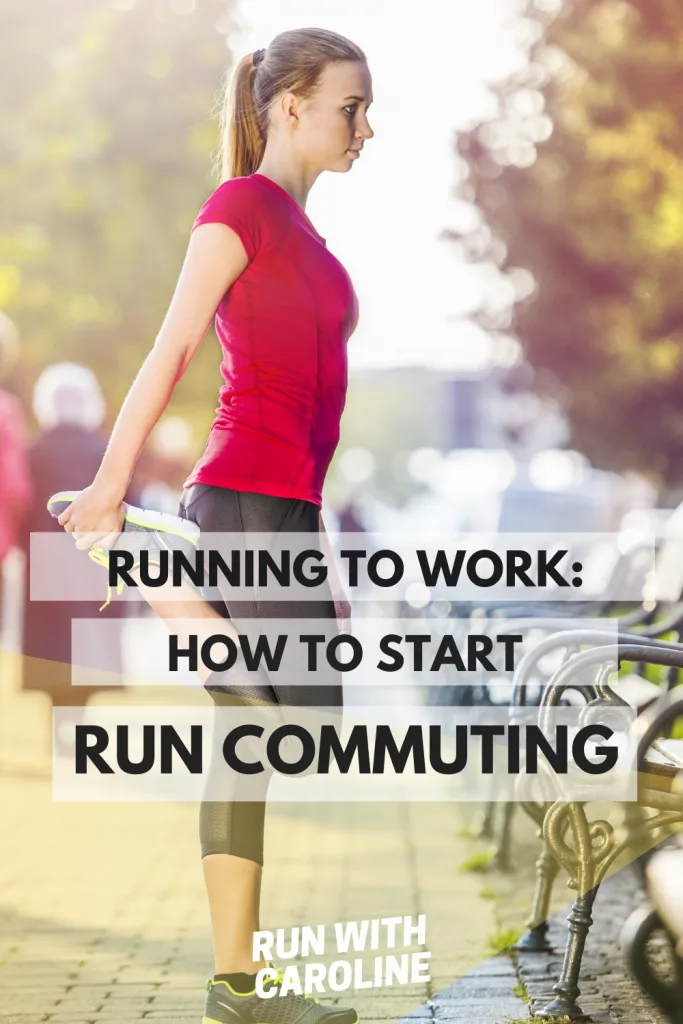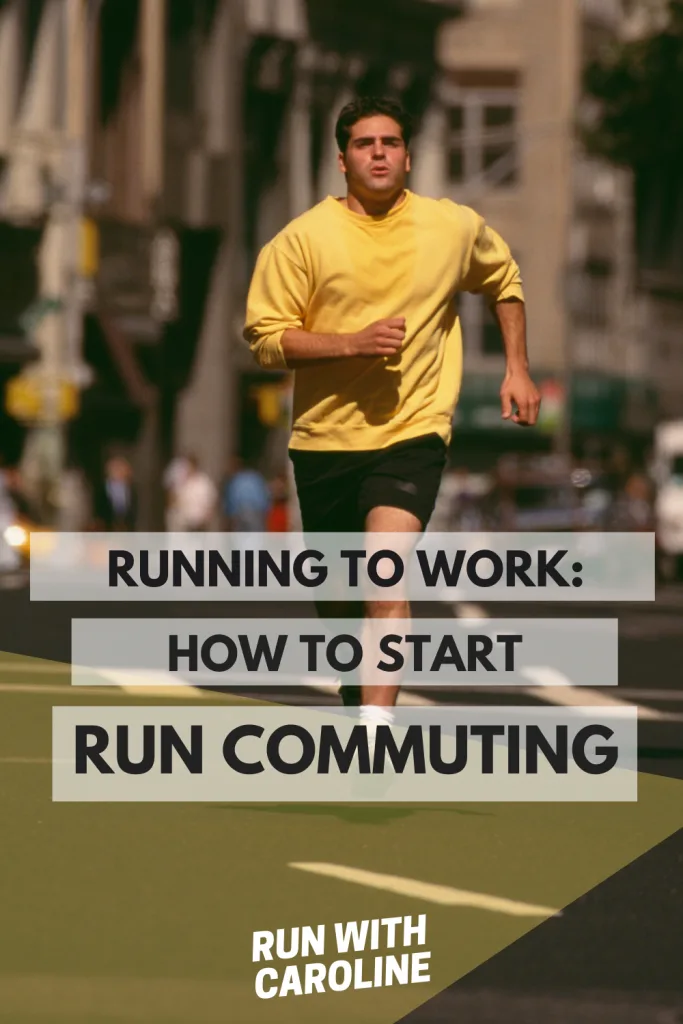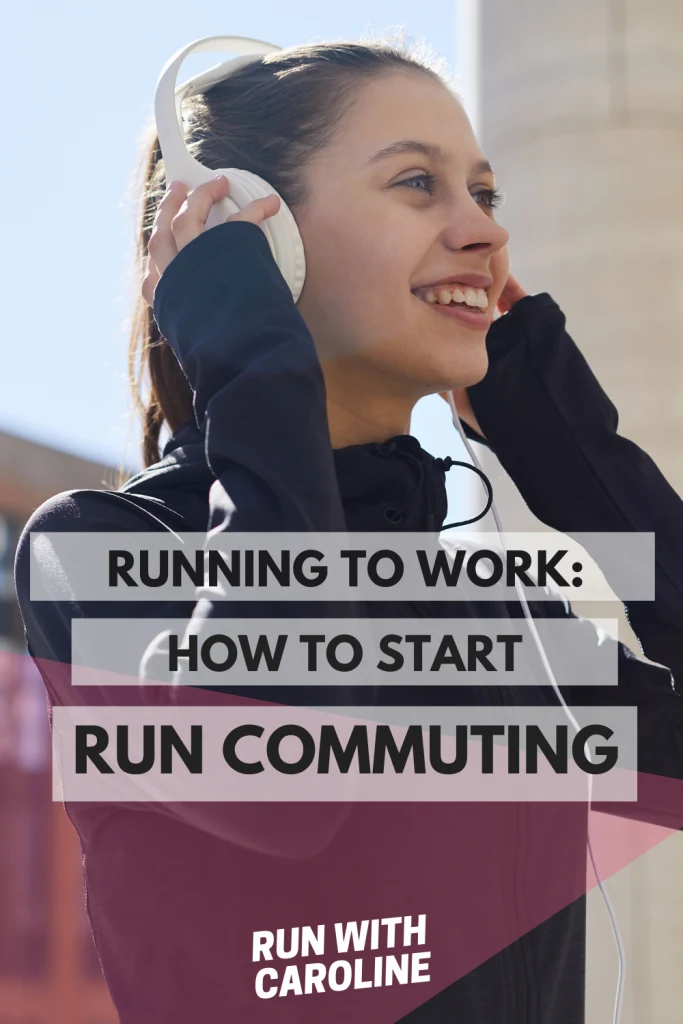How you fit a run into your day, or how you start running, can be made easier with the introduction of a run commute.
With our lives getting ever busier, many runners have found that run commuting (that is running to and from work) is an efficient way to up your weekly mileage.
It’s also a great way to avoid an overcrowded train or crammed bus in favour of the great outdoors!
In today’s climate, more people are taking up running or cycling as a sustainable and environmentally friendly means to get to work.
So if you’d like to get outdoors more, consider running to work and adding a run commute at least once or twice to your weekly routine.
In this guide we’ll explore:
- What is run commuting?
- What are the benefits of run commuting?
- Run commuting gear checklist
- What is the best backpack for run commuting?
- 8 ways to get the best out of your run to work
Ready?
Let’s go!

What is run commuting?
Run commuting is about replacing your normal commute in a car or on a train with a run for all or part of the way.
Over human history, running has been an important mode of transport.
After walking, it was one of your first real ways to explore the surroundings around us.
In modern times, according to research conducted in 2014, the majority of run commuters are between the ages of 30 and 45.
Most people run commute between 2 to 3 times a week and the majority of run commutes are between 3 to 7 miles.
The run commuting hotspot is London, with an average commute time of 45 minutes.
Related: Make time to run: How to fit a run into a busy schedule
What are the benefits of run commuting?
Running delivers well-documented physical and mental benefits.
Run commuting, in particular (compared to other traditional modes of commute), has a range of physical and emotional benefits as well as practical efficiencies.
Here are the key benefits of run commuting:
- Offers a less stressful commute to work
- Offers a more efficient and faster commute to work
- Offers a more environmentally friendly commute to work
- Offers an inexpensive route to work
- Increases running motivation
- Allows you to get outdoors more
- Improves your fitness and wellbeing
#1 Offers a less stressful commute to work
Traffic jams, train delays, rude commuters and traffic noise can all affect your experience when travelling to work.
By running to work, you won’t be held up in traffic and will be able to more accurately predict your arrival time at work.
A run commute will also help alleviate symptoms of stress and anxiety caused by a traditional work commute.
#2 Offers a more efficient and faster commute to work
For routes of up to 6 miles, a run commute can offer a faster way to get to work compared with travelling by car or public transport.
#3 Offers a more environmentally friendly commute to work
With an ever greater push towards ‘active’ travel, run commuting offers a sustainable method to travel to work.
Rather than driving or getting the bus to work, run commuting is far more better for the environment and reduces carbon emissions.
#4 Offers an inexpensive route to work
By running to work you could save hundreds each year in petrol and public transportation costs.
In today’s world, driving to work can be expensive, so what better way to save on the petrol costs than to run to work.
#5 Increases running motivation
Run commuting is a great way to increase running motivation and get you into the habit of running on a consistent basis.
You’re effectively replacing dead time during a commute with exercise which you may not have been able to do when you finish work.
Many runners opt to run commute when they are training for a long distance event like a half marathon or marathon as it’s a great way to fit a run into a busy schedule.
#6 Allows you to get outdoors more
Being outdoors daily as many benefits for your physical and mental health.
Many people struggle to spend time outdoors when they use traditional modes of transport and then spend all their day in an office.
#7 Improves your fitness and wellbeing
According to NHS activity guidelines, you should do some type of physical activity every day.
Exercising at least twice a week has been shown to reduce the risk of many health conditions including heart disease.
Related: Running a mile a day: Benefits + 9 reasons to do it

Run commuting gear checklist
When run commuting, it’s important you feel comfortable on your runs and prepare for all eventualities.
You will also likely be running with a backpack on your run, which may be a first for you if you haven’t run with a backpack before.
You can read more about the best backpack for run commuting in the next section of this guide.
In terms of running gear, you will want to dress for the weather as you would do on a normal run.
Opt for sweat wicking fabrics like polyester and Merino wool.
Here is our gear checklist for run commuting:
- Comfortable running shoes (a must!)
- A running backpack (to hold all your stuff)
- A warm base layer (e.g. running top)
- Running leggings/shorts
- Windproof or waterproof jacket
- A hat
- Running gloves
- High vis gear (if running in the dark)
- Running socks
- A running torch
- A fully charged mobile phone
- Credit/debit card – should you need to hop on a bus or train
Related: The ultimate running race day checklist
What is the best backpack for run commuting?
Wearing the right running backpack is essential for a successful run commute.
You’ll want to find one that is comfortable to wear and yet holds all your stuff like your gear and laptop.
When you run with a backpack, your back will likely feel a lot more sweatier than it would do on a normal run. Your running form may also change slightly.
Here are our 5 top picks for backpacks for run commuting:
#1 Best overall: OMM Phantom 12 backpack
#2 Best for the city: Salomon Trail 20 backpack
#3 Best for women: Gregory Maya 16 backpack
#4 Best cheap backpack: Deuter Speed Lite 15 backpack
#5 Best for carrying a laptop: Nike Commuter backpack
Related: Running backpack buying guide: Everything you need to know

8 ways to get the best of out of your run to work
Now you know more about run commuting and its benefits, here are 8 ways to get the best out of your run to work.
#1 Check the practicalities
Although running to work can be very freeing, it can be logistically complex depending on where you live and how far away your workplace is.
Through his PhD thesis on, run commuting expert Dr. Simon Cook from Birmingham City University learned what makes a successful run commute.
By far the most important tip for a successful run commute is sustainable logistics and planning.
If your commute is too long, consider taking the train for some of the route then run the rest of the way.
Likewise, if you drive to work, consider parking further away from your workplace then run the rest of the way.
This works really well if the traffic where you work is particularly bad and running actually turns out to be quicker!
#2 Shower at work
After your run, you’re likely to be sweaty and in need of a well-deserved shower before you start your working day.
Many workplaces nowadays have showers for active commuters like runners and cyclists. If you don’t have a shower at work, don’t run to work, run home instead.
Take your running kit with you in the morning, run home, then shower at home. This also works well if you prefer to shower at home.
There are also products you can buy that allow you to freshen up without needing a shower.
If you’re a hardy soul who doesn’t mind not having a shower after a run, then there are options for you.
Check out no rinse or waterless hair and body products like this one from Nilaqua.
#3 Get a good running backpack
Running with a backpack can be tricky, especially if you don’t have one that fits properly.
A good running backpack is essential for a run commute.
The key is to find one that you can comfortably run with and one that holds all your stuff like your laptop, work gear and other essentials.
Check out the section earlier in this guide for our top picks for running backpacks.
#4 Pack light
You don’t want to be carrying lots of gear and equipment in your backpack when you’re running.
So if you regularly take your laptop home with you, for example, consider leaving it at work on the day of your run commute.
Likewise, pack clothes that are easy to fit in your backpack.
There are surprising ways to fold your clothes so that they fit into the tiniest places. Check out this YouTube video for more information.

#5 Wear the right gear
As you would do on a normal run, it’s important to be prepared for all types of weather, including rain and wind.
Invest in a good waterproof and windproof jacket to keep you dry on those long runs.
When you run with a backpack, your back is likely to feel a lot more sweatier than it would do on a normal run.
Opt for sweat wicking fabrics like polyester and merino wool.
#6 Make time for your run
When running with a backpack, it’s likely that you’ll want to run at a steady pace, instead of going all out.
Ensure you plan your route effectively and allow adequate time so you don’t arrive late for work.
Consider your pacing and estimate how long it will take you to run your planned route.
For example, if you’d like to run at a steady pace like you would do on a long, slow run, calculate this against the amount of miles you have planned.
There are many pacing calculators out there online that allow you to check this based on things like pace, distance and terrain.
If you’re planning to shower when you arrive at work, allow adequate time for this too. This is especially true if there are limited showering facilities at your workplace.
#7 Be safe and be seen
As with all your runs, it’s important to stay safe on your run commute. Check your route and ensure there are plenty of paved areas.
If you have to run on the roadside, ensure you run against traffic.
Consider wearing a high-vis jacket, especially during the winter months.
A head torch is also a great way to be seen on those long dark runs.
#8 Enjoy it!
Once you plan your first run commute and get a run under your belt, it’ll soon feel easier and smoother.
Enjoy the time you have outdoors and before or after work and just think of the alternative – stuck in a traffic jam or crammed into a train.
If you regularly encounter problems during your commute, then run commuting could be a great alternative for you.
Take time to get used to it and consider adding a run commute into your routine once or twice a week then build it up from there.
If you’re training for a race like a half marathon or marathon, then run commuting could be a game changer for you.
This is especially true if you struggle to fit in the miles each week because of your working hours.
Related: 9 safety tips for running at night
- 5 things I wish I’d known before returning to running - March 3, 2024
- Running 20 minutes a day: Benefits + how to start - January 27, 2024
- How to run your first 2 hour half marathon - January 16, 2024
